QuestionHELLO, I HAVE 2 HORSES AND I AM TOTALLY NEW TO THE HORSE WORLD. I AM READING EVERYTHING I CAN GET MY HANDS ON AND ALSO WATCHING DVD'S TO EDUCATE MYSELF SO I WILL CAUSE THESE BEAUTIFUL CREATURES NO HARM. I WANT THEM TO BE HAPPY AND HEALTHY BOTH EMOTIONALLY AND PHYSICALLY. I HAVE MANY QUESTIONS AND HOPE THAT THIS IS NOT TOO MUCH TO ASK OF YOU. I SINCERELY APPRECIATE ANY HELP YOU CAN OFFER.
I HAVE A MARE-SUZY 16 YRS OLD-PREGNANT DUE IN JAN OR FEB 09
AND I ALSO HAVE SUZY'S BABY, GRACIE DOB: 01-15-08. I WEANED THE COLT ABOUT 2 WEEKS AGO. I SEPARATED THEM MILES APART FOR ABOUT A WEEK AND THE COLT QUIT EATING SO I BROUGHT THE MARE BACK AND NOW JUST HAVE THEM SEPARATED BY A FENCE AND BOTH ARE DOING WELL. THE COLT IS IN A PASTURE WITH AN OLDER RETIRED RACE HORSE WHO IS 26 YRS OLD, THEY ARE GETTING ALONG WELL BUT THE HORSE WONT LET THE COLT EAT UNLESS I TIE HIM UP. THE OWNER OF THE HORSE ONLY FEEDS HIM ONCE A DAY AND I AM NOT ALWAYS THERE TO FEED MY COLT AT THE SAME TIME SO IT IS DIFFICULT BECAUSE I DONT ALWAYS HAVE THE TIME WAIT UNTIL THE COLT FINISHES EATING. HOW CAN I REMEDY THIS? WHEN IS THE EARLIEST DATE THAT I CAN PUT THE COLT BACK WITH HER MOM? THE COLT IS EATING VERY WELL AND HAS BEEN FOR CLOSE TO A MONTH.
1.WHAT SHOULD THE FEEDING SCHEDULE BE FOR THE MARE AND WHAT FOR THE THE 4 MONTH COLT?
2.WHAT TO FEED WHILE PREGNANT/TIMES PER DAY?
3.WHEN SHOULD I TAKE MY MARE OFF OF FESCUE AND WHAT SHOULD I FEED HER INSTEAD?
4.WHEN SHOULD I START THE NEW COLT ON SOLIDS WHEN IT ARRIVES/TIMES PER DAY?
5.WHAT VACCINATIONS ARE NEEDED FOR BOTH SUZY AND GRACIE AND WHEN SHOULD THE NEW BABY START SHOTS?
6.WHEN VACCINATIONS ARE DUE WHEN? (VACCINATION SCHEDULE)
7.WHAT SHOTS CAN I ADMINISTER MYSELF AND HOW/WHERE DO I DO IT?
8.WHAT TO EXPECT DURING THE BIRTH, WHAT PRESENTS FIRST, HOW DO YOU KNOW IF THEY NEED HELP. SHOULD A VET BE PRESENT?
9.WHAT ARE SIGN AND SYMPTOMS OF SICKNESS OR PAIN/LAMENESS AND OR STRESS?
THANK YOU SO MUCH FOR YOUR TIME AND KNOWLEDGE.
KIM FRIESEN
INDEPENDENCE, KS
AnswerHi Kim, Well, since you are relatively new to the horse world I would like to start by telling you that in your questions you refer to your baby that you've weaned as a colt. A colt is a male still in tack (not gelded) who has never bred a mare. A female is called a filly until they have been bred then they are referred to as a mare. A baby in it's first few days of life is referred to as a foal. Now with that being said, if your baby is a colt (male) he will be fine with mares up until he's around a year old. After that he may start breeding. I would suggest gelding him as soon as his testicles drop as I would not recommend owning a stallion to someone who is new to horses, they can be very rowdy and in turn get very aggressive, plus they almost have to stay by themselves. Regarding the weaning, I would have left your baby at the other location where you had been weaning him, this would have made weaning more lasting. Any baby will stop eating and fret and carry on when they are weaned, that's part of the process seeing how they have just lost their mother. But I promise they will start eating when they get hungry enough, assuming nothing medically is wrong, you just have to hold out and know that if they lose weight they will put it back on. I don't recommend weaning until 5-6 months old unless the baby seems to be really independent and eating grain well. You should always make sure the baby is eating grain well before you wean. Since you have already moved the baby back into the same vicinity as his mother, the weaning process will take longer which may cause the baby to not be completely weaned ever which causes many social and behavioral problems later on. Whatever you do don't put the baby back with his mom now. When I wean a baby I take the baby out of sight and out of hearing distance, this method usually takes about 1 month. If your baby can see or touch noses with the mare, the baby may never be completely weaned. Right now you may not see a problem with that but when it comes time to break and ride the baby (around 3 yrs. old) you will have problems doing anything with the baby without it's mother being right beside it, which we all know is impossible. I would suggest at this time to take the mare away and leave the baby in it's comfortable surroundings that it's familiar with and leave it with the older horse as a baby sitter. As for the feeding problems, the only way to remedy that is to tie the older horse (which sounds not within your schedule) or take the baby out and feed him somewhere else when you are there, even if you have to stand outside the pasture and hold the baby while he eats, assuming he's halter broke. If he's not you need to do this as soon as possible. You should be feeding him a feed that has about 14% protein. As for the mare, it depends on what her weight is now as to what you need to feed her. If she's an easy keeper (fat) you wouldn't need to do much with her if she's not bred. If you needed to feed her grain to keep her weight up, I would suggest a 10% protein feed and grass hay. Without knowing what kind of pasture they are on it's hard to say what exactly she needs and how much. I feed mind twice a day, they come up in a stall during the day and out at night on grass pasture. Most horses who are general keepers can keep weight on by feeding 3-5 quarts of grain twice a day, with 2-3 flakes of hay twice a day. If they need more to keep weight on up your hay ration first as it's not good for digestive system to get too much grain. As for a pregnant mare, you may leave a pregnant mare on a regular feed schedule as if she were not pregnant until the last tri-mester which is at 8 months pregnant, 3 months until due date. At that time you will need to take her off of fescue and start feeding her grain formulated for pregnant/lactating mares which most feed stores will carry, I also give mine a mare supplement high in calcium. Depending on the mares weight will depend on how much to feed at one time, so I can't really say how much she needs. You should feed the mare twice a day. Alfalfa hay is great for pregnant mares because it's high in protein, also timothy is good, orchard grass is good. Anything but fescue will do. You should feed the hay when you feed grain. As for vaccines, assuming she is already up to date to begin with regarding yearly vaccines, she will need at 3, 5, 7, and 9 months a pneumabort shot which helps keeps the mare from aborting the foal due to sickness. Some people only do 5, 7, and 9 months but I like to be on the safe side. 30 days prior to foaling date she will need all yearly vaccines boosted as this will allow the baby to have a healthier immune system when born. All of these vaccines, except for rabies, you can get over the counter, you would give them in the muscle in the neck. I don't feel that I can tell you exactly where and how to give it as you would need someone to actually show you how to do it. If you get it in the wrong spot and hit a vein, you may cause the mare harm. I would suggest having your vet come out and do this at least for the first time so you would know how to correctly. I also like to de-worm the mare with Ivermectin right when the baby is born. You can get this at your feed store. Speaking of de-worming, your pregnant mare should stay on a regular every 6 week de-worming schedule during her pregnancy. Ivermectin is safe for pregnant mares, read on the de-wormer's label to make sure it's safe for pregnant mares before giving it. Horse gestation is around 11 months or 340 days. I had a mare this year to go over 12 months before delivering. So there is a big time frame. Anywhere from 330-380 days is considered normal. Anytime before that usually ends in foal death. A mare will "bag up" anywhere from 1 month to minutes before delivery. Some mare will drip milk prior and some won't as this goes for "waxing" also. If a mare drips continuously you should call your vet. If you suspect a mare is bred you should have them ultra-sounded at 14-18 days bred. Only at this time can the vet pinch a twin off if your mare is carrying twins. Twins rarely survive and can cause problems delivering for the mare. There are 3 stages of labor, the first stage being the mare just feeling uncomfortable, agitated, not as interested in feed. This stage can last hours or days. This is when the baby is turning into position, the mare may lay down and roll but also be sure she's not colicking. The second stage is when the water breaks and mare starts hard labor, she may lay down and get up, sweat, kick at her stomach and be really uncomfortable. After the water breaks the baby should start presenting with 2 front feet, toes facing down towards mom's feet, within 30 minutes usually sooner. If it takes much longer you should get the mare up and keep her up until your vet can assist as this may mean something is wrong such as the baby being turned wrong in the birth canal. If the hind feet or only one foot presents, get the mare up and call your vet, as time is of the essence. Soon after you see the two front feet the baby should be fully delivered within 5-10 minutes, again if it takes longer you may assist by keeping tension on the baby's front feet and gently pull down towards the mares feet during contractions. I don't recommend this if you've never done it before as you can cause more harm than good if you don't know what your doing. If you feel things aren't progressing fast enough call your vet. Once the baby is out make sure the bag is broken and the baby can breath on her own, you may break the bag when the baby's head is good and out so that the baby can breath. Also at this time allow the baby to stay down and the mare stay down to rest as this will allow those important antibodies to pass from mare to baby via umbilical chord. They may lay as long as they will because when the mare stands the umbilical chord will break. The baby's hind feet or legs may still be in the mare but just leave them alone as this antibody transfer is very important. The baby should stand within 1 hour, baby should nurse within 3 hours. You should dip the baby's umbilical stump with 7% iodine tincture or 4 parts water 1 part novasan at this time and a couple of times a day for three days there after. Allow the mare and baby to bond, once everybody seems OK you may go in and imprint if you want to do that. I won't leave a mare and baby until the baby sucks. The third and final stage of labor is the passing of the placenta. This can be painful for the mare as she has contractions to allow this to pass. If you want you may give your mare banamine during this time to ease the pain, but it's not a necessity. Make sure to keep the placenta and let your vet check it to make sure it's all there and there is none retained inside the mare as this can cause a serious infection if it's not all passed. You should have your vet out at least 12 hours after birth. At this time he will check the baby's blood to be sure the baby got enough colostrum and antibodies from the mare, (IGg test), if the baby did not get enough the vet will have to administer plasma via transfusion. As long as you keep your mare off grass three months prior to parturition, and keep her vaccines up to date you shouldn't have a problem. The vet will also worm the mare and baby, vaccinate the mare and baby, check the placenta, check the mare, and check the baby for an umbilical hernia. It is important not to skip the "day after check" with the vet. Assuming everything is OK, I like to leave the mare and baby up for 24-48 hours after delivery then you may put them out by themselves in a safe paddock or small pasture. Mare's may foal in a stall, if so it should be big such as 14 X 14. My foaling stalls are 12 x 14 and seem to work fine. You should bed the stall with straw instead of shavings so that nothing clogs the baby's airway while it's new and wet. If you use a stall be sure everything is clean and disinfected with something like novasan disinfectant. The mare may also foal outside in a pasture or paddock, if so be sure it's clean of dirt and manure preferably in grass, not fescue. I like to put a foal halter on my babies when their a couple of days old and start the halter breaking process when they're about 1 month old. If you do this be sure to check the halter weekly so that it does not get too small for the baby and rub or cut into the baby's skin. The more you can handle the baby at an early age the easier everything will be later. As for symptoms of pain etc. any horse will roll, kick, or sweat while in pain such as colic. If this happens and it's obviously not labor, you should get one up and walk them until the vet can arrive. With colic if you can get the horse to pass manure the better the chances are the horse will not have a twisted gut. Walking them keeps them from rolling and keeps gas moving in their gut. Also, anytime a horse goes off their feed this usually indicates something's not right or have a temperature, they don't feel good. A horses normal temperature is 100 degrees to 101 degrees. Also if they are not drinking, this would indicate a problem. As for lameness, a horse will "bob" their head when they are lame. This is usually pretty obvious as one will raise their head up higher when the sore foot/leg is on the ground bearing weight. They will also park out the foot/or leg when standing still to take their weight off of it. A hind lameness you will often not see as much head bobbing but will see one hip drop lower than the other when watching from behind. You will also be able to feel a difference when riding them. If you feel heat or see swelling anywhere in their hoof or leg then this could be the cause of the lameness. If you can't find anything call the vet or your farrier for help. The more you can read the better, as you know. You can google all of this information that will give more details, this is just a short version of the basics. Good luck with your mare and baby and potential upcoming baby. Let me know if you I can help you any more. Jessica

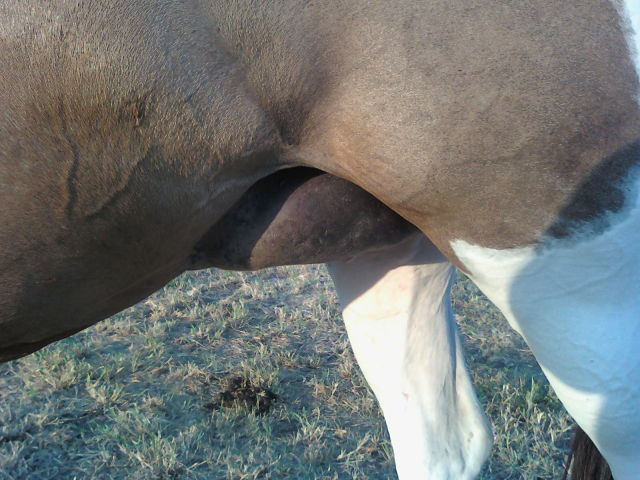 What could my horse be allergic to?
Question
Blue
I have a 14 year old paint mare that just
What could my horse be allergic to?
Question
Blue
I have a 14 year old paint mare that just
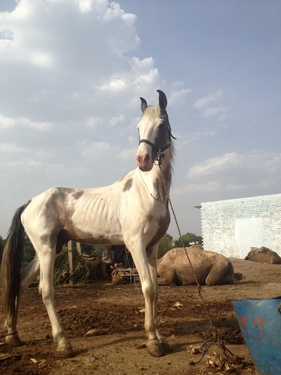 improving body condition
Question
horse
hello maam, how can i improve the
improving body condition
Question
horse
hello maam, how can i improve the
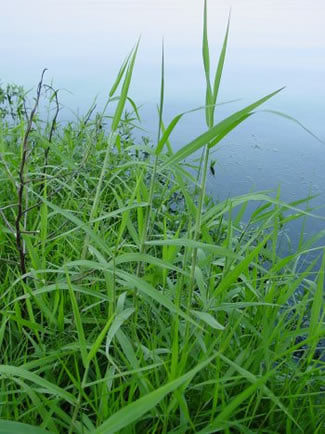 para grass for my thoroughbred
Questionpara grass
QUESTION: hello maam, can i f
para grass for my thoroughbred
Questionpara grass
QUESTION: hello maam, can i f
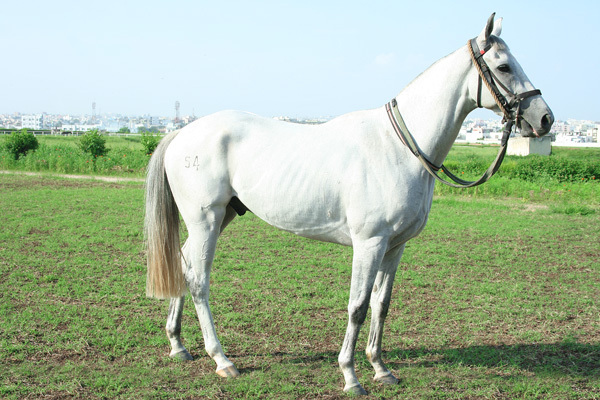 guessing the horse weight seeing it
Question
guess weight
hello maam. this is a thor
guessing the horse weight seeing it
Question
guess weight
hello maam. this is a thor
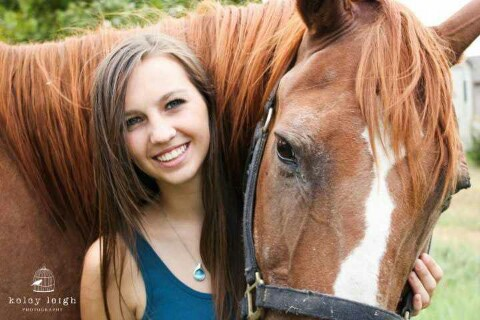 Senior Winter Care
Question
Doc and I
My horse is 29 and will turn
Senior Winter Care
Question
Doc and I
My horse is 29 and will turn